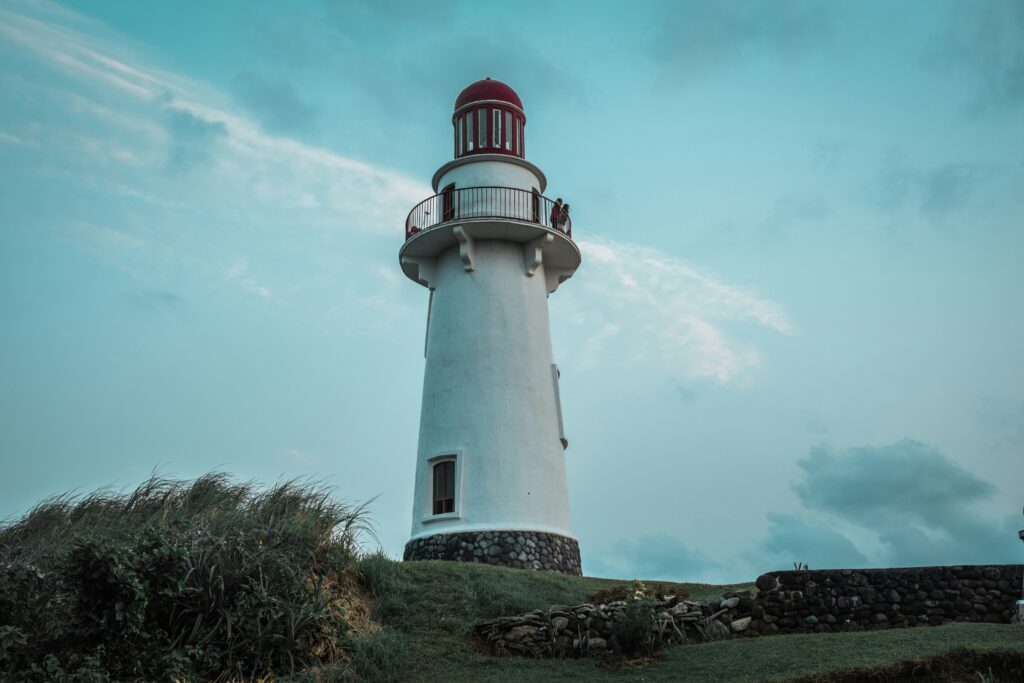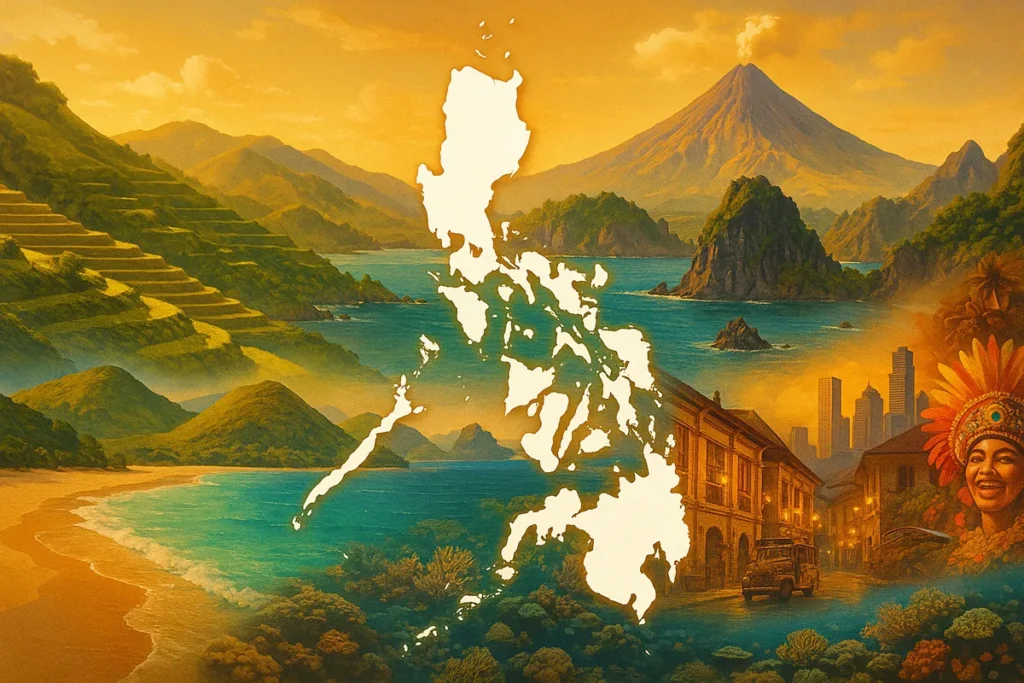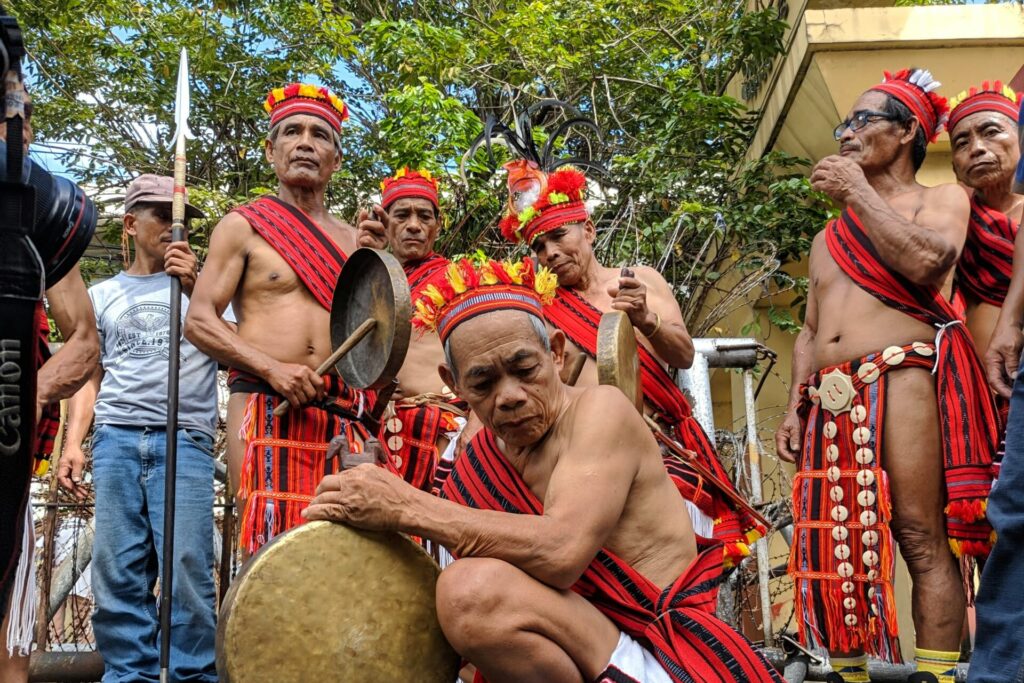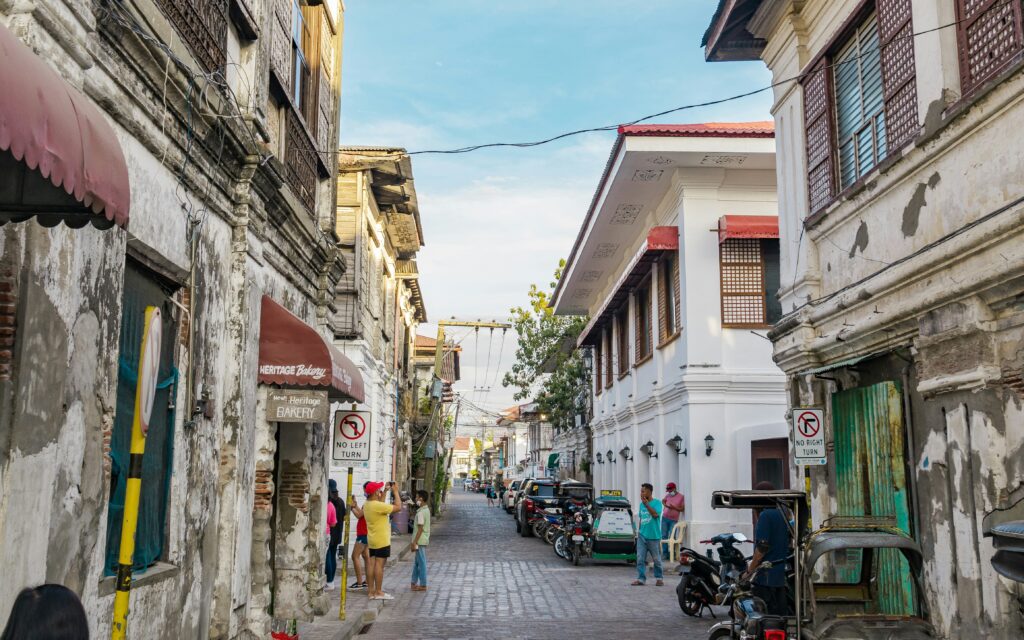Cagayan Valley, officially known as Region II, stretches across the northeastern part of Luzon where fertile plains meet rugged mountains and winding rivers. It is the largest region in Luzon in terms of land area, and it feels like a land of plenty, from the vast farmlands that feed the country to the mighty Cagayan River, the longest in the Philippines.
The region is made up of 5 provinces: Cagayan, Isabela, Nueva Vizcaya, Quirino, and the island group of Batanes. The landscapes here are wide and open, yet they hold pockets of beauty that surprise travelers: caves carved by nature, centuries-old churches, quiet coastal towns, and protected islands teeming with life.
Cagayan is known for its historic churches and white-sand islands in the Babuyan Channel. Isabela is a mix of agriculture and adventure, with rice fields stretching endlessly and natural parks waiting for explorers. Nueva Vizcaya, often called the gateway to the north, is rich in waterfalls and mountain landscapes. Quirino remains off the beaten track, a haven for ecotourism and adventure seekers. And then there is Batanes, the country’s northernmost gem, famous for its rolling hills, stone houses, and raw seascapes.
This Cagayan Valley tourism guide will take you through its provinces, culture, food, and natural wonders, giving you everything you need to plan a trip.
Cagayan Valley Tourism Guide | 5 Provinces & Best Highlights
📍 Location
Located in the northeastern part of Luzon, Cagayan Valley is bordered by the Cordillera mountains to the west, the Sierra Madre to the east, and the Babuyan Channel to the north.
🌤️ Climate
The region has a tropical climate with hot summers from March to May, a rainy season from June to October, and cooler months from November to February. Batanes enjoys a cooler, windier climate year-round.
🗣️ Languages
Ilocano is the most widely spoken, followed by Ibanag and Itawit in Cagayan, Gaddang in Nueva Vizcaya, and Ivatan in Batanes. Filipino and English are also commonly understood.
🚍 Accessibility
The region can be reached from Manila by land in 8–12 hours via buses bound for Tuguegarao, Cauayan, or Bayombong. Laoag and Clark airports also connect travelers, while Batanes is accessible only by flights from Manila or Clark.
👥 Demographics
Cagayan Valley is home to over 3.6 million people. It is a cultural mix of Ilocano settlers, indigenous groups like the Ibanag, Gaddang, Itawit, Isinai, and the Ivatan of Batanes.
🌾 Economy
Known as the country’s “Rice and Corn Granary,” the region thrives on agriculture. It is also rich in fisheries, livestock, and eco-tourism, with Batanes and Palaui Island drawing international attention.
Cagayan Valley Tourism Guide: The 5 Provinces
Cagayan Valley Tourism Guide: Province #1. Cagayan
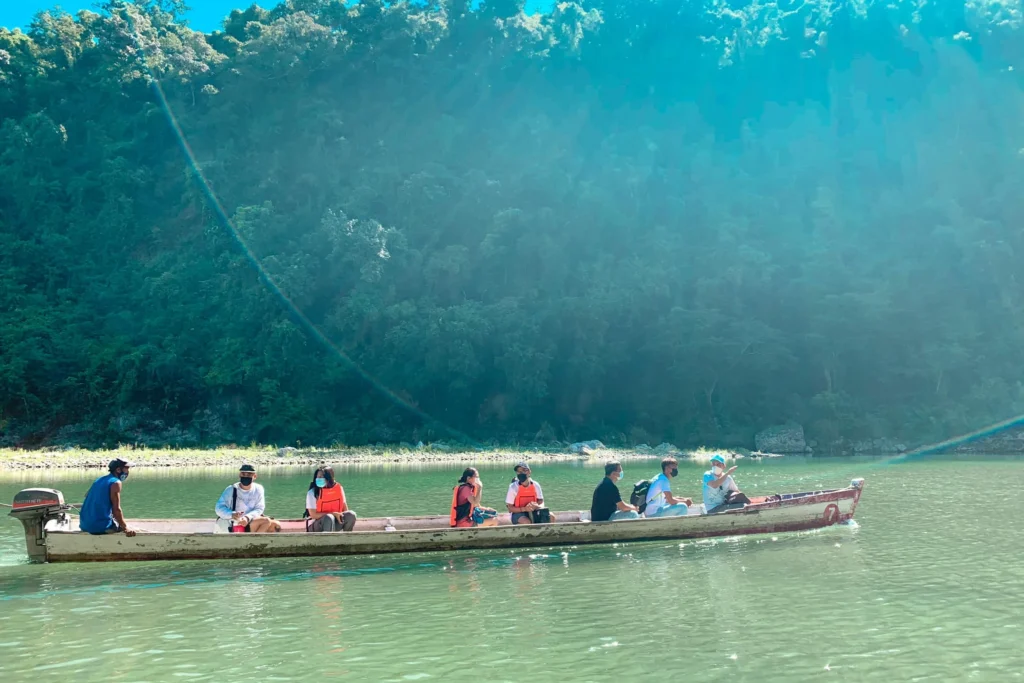
Cagayan is the largest province in Region II, stretching from the plains of the Cagayan River to the northernmost islands of the Babuyan Channel. Tuguegarao City, its capital, is the main entry point and a bustling hub of schools, food spots, and heritage churches. The province is home to natural wonders like Callao Cave, famous for its cathedral-like chambers, and Palaui Island, a protected seascape known for rugged coastlines and untouched beaches.
Adventure seekers often travel farther north to the Babuyan Islands, where humpback whales migrate during the season. Cagayan’s culture is shaped by its mix of Ilocano, Ibanag, and Itawit communities, each adding layers of tradition to local festivals and cuisine. Whether you are exploring ancient churches like Iguig Calvary Hills, kayaking in Penablanca, or hopping between island villages, Cagayan offers both accessibility and adventure.
Cagayan Valley Tourism Guide: Province #2. Isabela
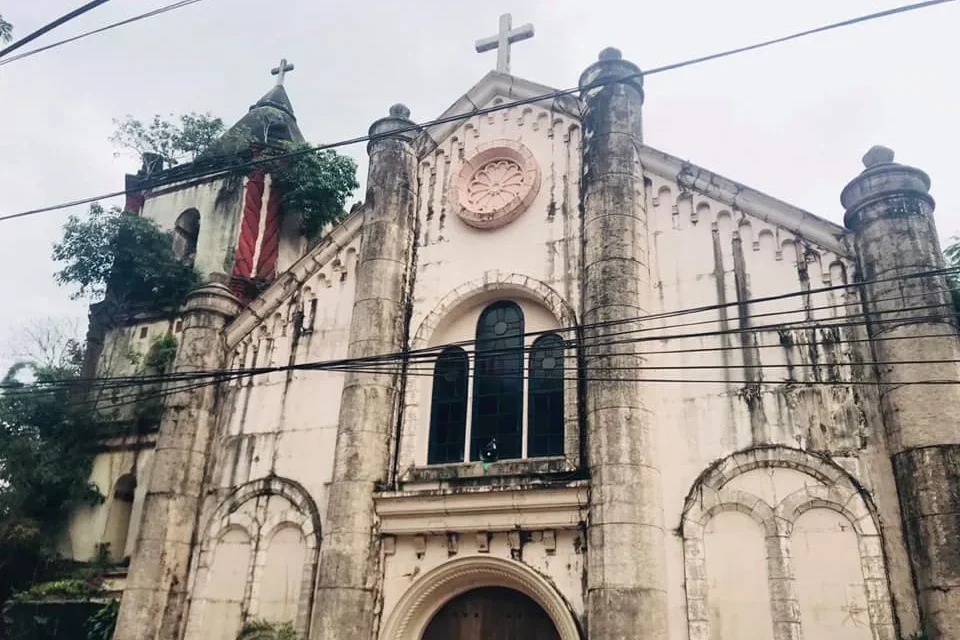
Known as the “Rice and Corn Granary of Luzon,” Isabela is the largest province in the region by land area. Its capital, Ilagan City, is surrounded by expansive plains that make the province one of the top food producers in the country. But beyond agriculture, Isabela offers destinations for adventure and nature lovers. The Northern Sierra Madre Natural Park is a biodiversity hotspot, home to lush rainforests and wildlife.
The Magat Dam, one of Southeast Asia’s largest, not only powers Luzon but also provides scenic lake views. Santiago City, while independent, serves as a major commercial and cultural hub for southern Isabela. Visitors often enjoy Isabela’s mix of local flavors, including pancit Cabagan and longganisa. With a growing infrastructure of roads and airports, the province is becoming a stronger destination for both farm tourism and eco-adventure.
Cagayan Valley Tourism Guide: Province #3. Nueva Vizcaya
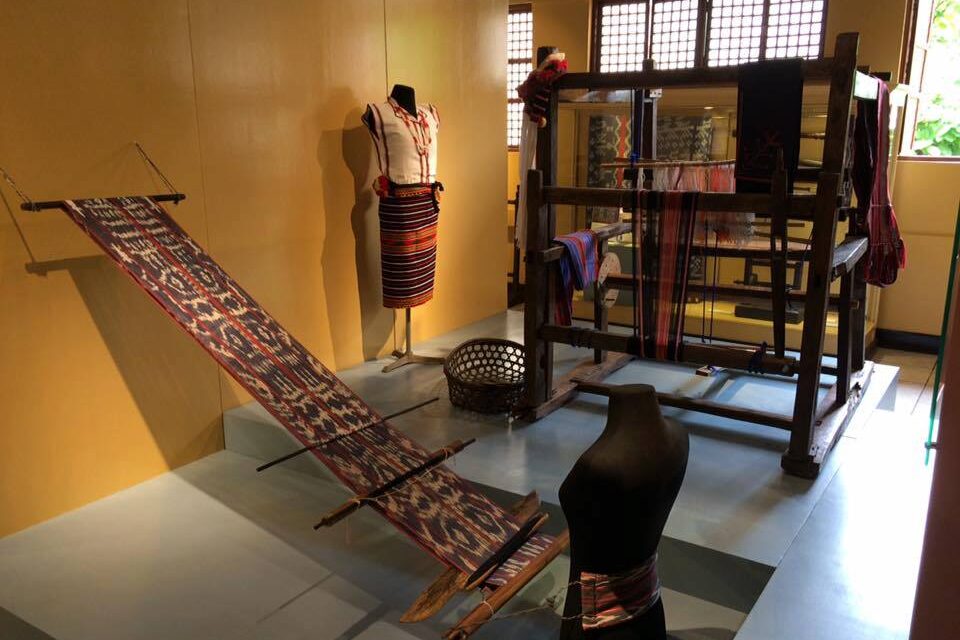
Often called the “Gateway to the Cagayan Valley,” Nueva Vizcaya is a landlocked province nestled between the Cordillera and Sierra Madre mountain ranges. Bayombong, the provincial capital, is a quiet but charming town with Spanish-era churches and educational institutions. The province is known for its eco-tourism spots, including Imugan Falls, Capisaan Cave System, and scenic mountain trails that appeal to hikers.
Nueva Vizcaya is also culturally diverse, with indigenous groups such as the Gaddang, Isinai, and Ilongot contributing to a vibrant mix of traditions. Its upland communities produce vegetables, fruits, and handicrafts, making local markets colorful and lively. For travelers, Nueva Vizcaya serves both as a stopover and a destination on its own, offering a mix of waterfalls, caves, and authentic highland culture.
Cagayan Valley Tourism Guide: Province #4. Quirino
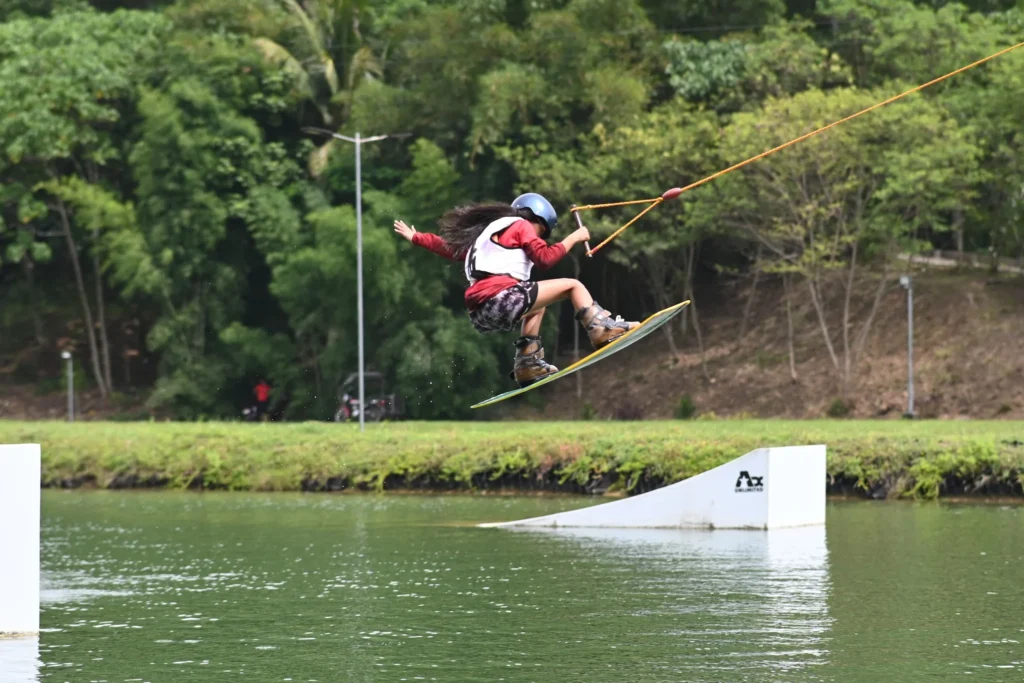
Quirino may be the smallest province in Region II, but it’s a hidden paradise for eco-tourism and outdoor adventure. Nicknamed the “Forest Heartland of Cagayan Valley,” it is blessed with lush landscapes, rivers, and mountains that make it perfect for hiking, rafting, and spelunking. The Governor’s Rapids along the Cagayan River offer thrilling whitewater rafting experiences, while Aglipay Caves and Forest Park attract spelunkers and nature lovers.
Maddela, the provincial capital, is a peaceful town surrounded by greenery. The people of Quirino are known for their hospitality, often welcoming visitors with stories about their way of life. Since it remains off the beaten path, Quirino appeals to those who want authentic experiences away from crowds. Its commitment to sustainable tourism ensures that visitors enjoy nature while helping preserve it for future generations.
Cagayan Valley Tourism Guide: Province #5. Batanes
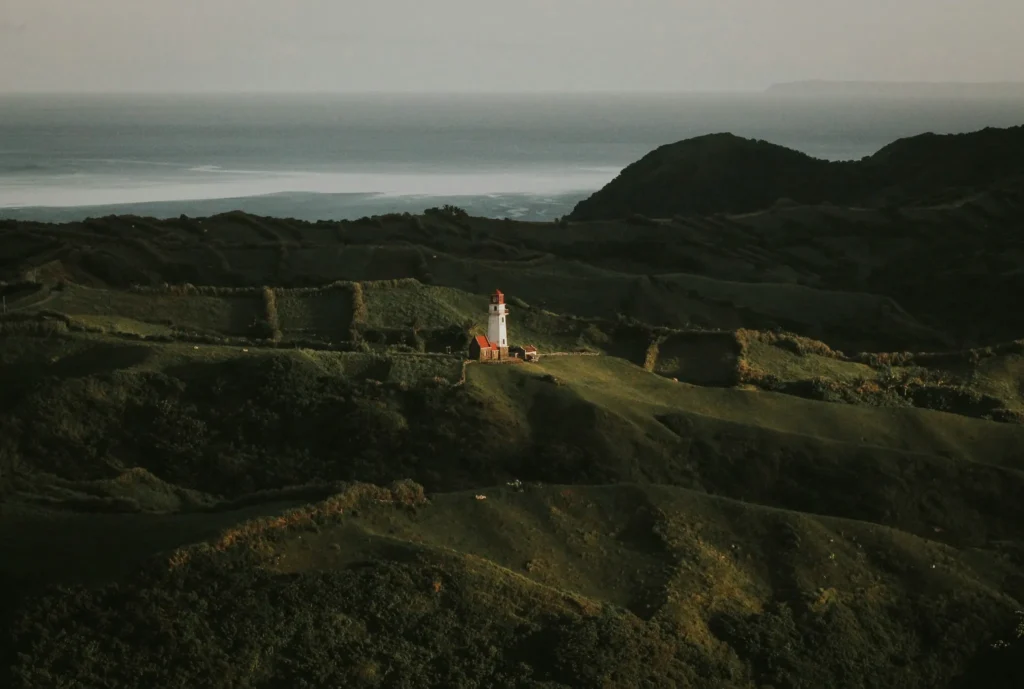
Batanes is the northernmost province of the Philippines and perhaps the most unique. Composed of a cluster of islands in the middle of the Luzon Strait, it is often described as a world of its own. Rolling green hills, rugged cliffs, and stone houses define its landscapes, while the surrounding seas are as unpredictable as they are breathtaking. Basco, the capital, is a favorite base for exploring Marlboro Hills, Valugan Boulder Beach, and the historic Ivana Church.
In Sabtang and Itbayat, visitors experience traditional Ivatan culture, from limestone houses to local dishes like uvud balls and wakay (sweet potato). Unlike most provinces, Batanes enjoys a cool climate year-round, making it comfortable for long hikes and bike rides. More than its views, it is the warmth and resilience of the Ivatan people that captivate travelers. Batanes feels both far away and deeply familiar, a place where time moves differently.
Cagayan Valley Tourism Guide: Culture & People
The soul of Cagayan Valley lies in its people, whose traditions and daily lives are shaped by the land, rivers, and seas that surround them. This region is home to a mix of communities — Ilocanos, Ibanags, Itawits, Gaddangs, Isinais, Bugkalots, and the Ivatans of Batanes — each carrying distinct languages, practices, and beliefs. Farming, fishing, and handicrafts remain cornerstones of life, passed down from one generation to the next. Alongside these traditions are colorful festivals, faith-centered gatherings, and the quiet hospitality that welcomes travelers into homes and towns.
Agricultural Roots and Daily Life
Cagayan Valley is often called the food basket of Luzon, and this identity shapes the rhythm of life for its people. Farming families rise early to tend rice fields, corn plantations, and vegetable gardens that stretch across wide plains. Markets in towns and cities come alive with the colors and scents of fresh produce, showing how agriculture fuels both the economy and local traditions. Even celebrations are tied to the harvest, where bountiful yields are offered with gratitude. This connection to the land creates a sense of resilience and simplicity among the people of the valley.
Languages and Diversity
The region is a mosaic of languages, reflecting its cultural diversity. Ilocano is the most widely spoken, but communities also preserve Ibanag, Itawit, Gaddang, Isinai, and Ivatan. Each language carries its own expressions, songs, and oral traditions, keeping stories alive through generations. English and Filipino bridge communication, especially in schools and business. This mix of tongues highlights how different groups coexist while maintaining their unique heritage.
Festivals and Celebrations
Festivals across the region bring communities together and showcase both tradition and pride. Tuguegarao celebrates the Pav-vurulun Festival, emphasizing unity and cultural heritage, while Isabela’s Bambanti Festival honors its role as a farming powerhouse. In Batanes, feasts tied to fishing seasons and harvests keep Ivatan rituals alive. Nueva Vizcaya and Quirino also hold local fiestas that blend Catholic traditions with indigenous practices. These gatherings are marked by music, dances, and food — celebrations that remind visitors of the region’s deep roots.
Indigenous Communities
Cagayan Valley is home to many indigenous groups whose ways of life are closely tied to nature. The Gaddang of Nueva Vizcaya, the Isinai of Aritao, and the Ilongot (Bugkalot) in upland areas continue to practice distinct rituals and crafts. In Batanes, the Ivatan people are known for their stone houses built to withstand strong typhoons, as well as their communal culture of helping one another. These groups hold onto age-old practices even as modern influences arrive. Their resilience makes the region a living showcase of cultural survival and adaptation.
Faith and Traditions
Spanish colonization left a strong Catholic influence, visible in the centuries-old churches scattered throughout the valley. Piat Basilica in Cagayan remains one of the most important pilgrimage sites in Northern Luzon, drawing thousands of devotees each year. Faith is interwoven with daily life, from town fiestas honoring patron saints to processions during Holy Week. Indigenous beliefs, however, continue to shape rituals tied to farming, hunting, and community healing. This blend of old and new traditions reflects the spiritual depth of the region.
Hospitality and Values
Visitors to Cagayan Valley often remark on the warmth of its people. Locals are eager to share meals, stories, and directions, treating travelers like part of the community. Hard work and resourcefulness are valued traits, shaped by generations of farming and fishing. Respect for elders and close family ties remain central to daily life. It is this quiet hospitality — not just the sights — that makes journeys through the valley memorable.
Cagayan Valley Tourism Guide: Food & Cuisine
The food of Cagayan Valley reflects both its fertile land and the diverse people who call the region home. Meals are hearty, often meant to sustain farmers, fishermen, and travelers who live close to nature. Rice and corn are ever-present, while fresh vegetables, river fish, and locally raised meat fill markets and kitchens. Each province contributes its own specialties, from Tuguegarao’s famous noodle dishes to Ivatan stone-oven cooking in Batanes. To eat here is to experience culture in its most flavorful and comforting form.
Pancit Batil Patung (Cagayan)
Tuguegarao’s signature dish, pancit batil patung, is more than just noodles — it’s a full meal in a bowl. Made with fresh miki noodles, stir-fried meat, vegetables, and a topping of egg, it’s served with a side of egg-drop soup. The dish is best eaten with vinegar, soy sauce, and chili, mixed to your own taste. Locals often debate who makes the “best” pancit batil patung, but every version feels like a piece of Cagayan’s identity.
Pancit Cabagan (Isabela)
Isabela has its own take on pancit, known as pancit cabagan. Unlike Tuguegarao’s saucy noodles, this version is richly flavored with thick broth, vegetables, and crispy toppings. It’s a staple during fiestas and family gatherings, showcasing the province’s love for abundant meals. For visitors, it’s a must-try stop when traveling through Isabela’s busy highways.
Etag and Pinuneg (Cordillera Influence in Nueva Vizcaya & Quirino)
In upland parts of Nueva Vizcaya and Quirino, Cordillera-influenced dishes like etag (smoked pork) and pinuneg (blood sausage) are still enjoyed. These foods reflect the blending of cultures at the crossroads between the mountains and the valley. Served during special occasions, they carry both flavor and history in every bite.
Ivatan Cuisine (Batanes)
The Ivatans of Batanes are known for food that reflects their island environment and resourcefulness. Root crops like sweet potatoes (wakay), yam, and gabi are staples, paired with dried fish and seasonal vegetables. Uvud balls, made of banana pith, minced fish, and meat, are uniquely Ivatan. Traditional cooking often uses stone ovens or clay pots, adding a rustic flavor to simple ingredients.
Fresh Produce and Farm Food
Cagayan Valley is the rice and corn granary of the north, so expect fresh produce to be at the heart of daily meals. Vegetables like eggplant, ampalaya, and sayote are widely used, while fruits such as bananas and mangoes thrive in its climate. Local markets are filled with farm-to-table goods, from sticky rice delicacies to native snacks. Food here feels wholesome and connected to the land.
Local Drinks and Treats
Tapuy, a traditional rice wine, is brewed and enjoyed during gatherings across the region, especially in highland towns. In Isabela, corn-based delicacies and kakanin are popular, reflecting the province’s role as a corn hub. In Batanes, sugarcane wine and coconut-based sweets are offered during fiestas. These drinks and treats add sweetness and warmth to celebrations, closing meals with a touch of community spirit.
Cagayan Valley Tourism Guide: Nature & Attractions
Callao Cave (Cagayan)
One of the most famous landmarks in the region, Callao Cave in Peñablanca is a massive limestone cave system with seven chambers. Its highlight is a natural cathedral where sunlight filters through an opening in the roof, illuminating a chapel built inside. Beyond the chapel, stalactites and rock formations give each chamber a distinct character. The cave is part of the Peñablanca Protected Landscape and Seascape, which also includes the Pinacanauan River, popular for boating and kayaking. Callao Cave combines natural wonder with cultural and spiritual meaning, making it a must-visit stop in Cagayan.
View this post on Instagram
Palaui Island (Cagayan)
Located off the coast of Sta. Ana, Palaui Island is a protected seascape known for rugged beauty. White-sand beaches like Anguib Beach and Cape Engaño showcase pristine waters, while hiking trails lead to lighthouses overlooking sweeping coastal views. Its remote setting has kept it unspoiled, and it was even featured in international media as one of the best beaches in the world. Snorkeling, camping, and trekking are popular activities, but the real highlight is the untouched, raw atmosphere. Palaui is perfect for those seeking adventure away from tourist-heavy destinations.
View this post on Instagram
Cagayan River (Cagayan and Isabela)
The Cagayan River is the longest and largest river in the Philippines, flowing through the heart of the valley. It is not only a lifeline for irrigation and fishing but also a center of recreation and local culture. Travelers can enjoy boat rides, fishing trips, and riverside picnics, especially in towns like Tuguegarao and Alcala. The river also hosts the annual boat races and festivals that highlight its importance. Its vastness and calm waters provide a scenic backdrop to many towns in the region.
View this post on Instagram
Magat Dam and Reservoir (Isabela)
Straddling the provinces of Isabela and Nueva Vizcaya, the Magat Dam is one of the largest in Southeast Asia. Built primarily for irrigation and hydroelectric power, it has also become a tourist spot. The reservoir offers breathtaking views, especially at sunrise and sunset when the water mirrors the surrounding hills. Fishing and boating activities add to its appeal, while eco-parks nearby provide space for family trips. Magat Dam shows how natural resources and modern engineering can create both livelihood and beauty.
View this post on Instagram
Governor’s Rapids (Quirino)
Known for its clear turquoise waters and dramatic limestone cliffs, Governor’s Rapids along the Cagayan River is Quirino’s most popular attraction. It’s a hotspot for whitewater rafting, kayaking, and even stand-up paddling. The rapids are surrounded by forested landscapes, giving travelers a mix of adventure and serenity. Nearby caves and rock formations provide additional exploration for thrill-seekers. This site is not only about adrenaline but also about appreciating Quirino’s pristine environment.
View this post on Instagram
Rolling Hills of Batanes
The iconic rolling hills of Batanes — Marlboro Hills, Vayang Hills, and Racuh a Payaman — are postcard-perfect landscapes that capture the raw charm of the province. Carpeted with green grass and dotted with grazing cattle, the hills overlook the powerful waves of the West Philippine Sea and the Pacific Ocean. Walking these hills feels like stepping into a painting, with views that shift beautifully under changing skies. For the Ivatan people, these lands are part of their heritage and everyday livelihood. For visitors, the hills represent the serene and unspoiled side of the Philippines.
View this post on Instagram
Valugan Boulder Beach (Batanes)
Unlike the sandy shores most travelers expect, Valugan Boulder Beach in Basco is lined with smooth volcanic boulders. The rocks were spewed centuries ago by Mt. Iraya and shaped by waves over time. It is not a swimming beach, but it offers dramatic coastal scenery, especially at sunrise when golden light glows against the rocks and sea. Fishermen are often seen casting nets here, adding a local touch to the rugged setting. Valugan is a reminder that Batanes landscapes are shaped by both natural power and quiet resilience.
View this post on Instagram
Cagayan Valley Tourism Guide: Getting Around
Travel Routes
🚍 Manila to Tuguegarao
10–12 hours by bus (Victory Liner, GV Florida, Dalin). Buses leave regularly from Cubao and Pasay, making Tuguegarao the main overland entry point to the region.
✈️ Tuguegarao Airport
Daily flights from Manila (1 hour) make this the fastest way to reach northern Cagayan. From here, vans and buses connect to towns across the province and nearby Isabela.
🛫 Cauayan Airport (Isabela)
Serves flights from Manila to central Isabela. Ideal for travelers heading to Ilagan, Santiago, and eco-tourism spots in the Sierra Madre mountains.
🛫 Basco Airport (Batanes)
Flights from Manila and Clark (1.5 hours). This is the only way to reach Batanes, with connections to Sabtang and Itbayat by boat once you arrive.
Cagayan Valley is connected to Manila and Central Luzon through long overland routes and a few key airports. Travel times can be long, but the expressways and upgraded highways make the trip smoother compared to years past. Tuguegarao serves as the main hub for northern Luzon, while airports in Isabela and Batanes provide faster access to farther destinations.
Public Transport: Buses are the backbone of travel within the valley, linking Tuguegarao, Ilagan, Bayombong, and Santiago. Jeepneys, vans, and tricycles serve local routes, though schedules can be flexible and often depend on demand.
Private Travel: Driving allows more freedom to stop at heritage churches, waterfalls, and small towns along the way. The highways can be long and winding, so plan fuel stops carefully. Trips to Batanes, however, will always require a flight from Luzon.
💡 Pro Tip: If traveling by land, start your trip at night on sleeper buses. You’ll save on a night’s accommodation and arrive in Tuguegarao or Isabela by morning.
Travel Tips
💰 Budget
Daily expenses can range from ₱1,200–₱2,500 for mid-range travelers. Bus fares and affordable food options make it budget-friendly, but trips to Batanes or Palaui Island require more planning and higher costs.
🛡️ Safety
Major towns and tourist areas are safe, but some remote roads can be challenging at night. Always check weather updates, as heavy rains can cause flooding or landslides in mountain passes.
🎒 Packing
Bring light clothing for lowland heat, but pack a jacket for Batanes or Nueva Vizcaya where nights can be cooler. Waterproof gear is handy if you’re visiting during the rainy months.
🚍 Transportation
Buses and vans are the main way to move between provinces. Expect long travel times, so carry snacks, water, and patience. For Batanes, flights are your only option, with boats linking the smaller islands.
🍲 Food & Water
Must-tries include pancit batil patung, pancit cabagan, and Ivatan specialties like uvud balls. Stick to bottled or purified water when exploring rural towns to avoid stomach issues.
🌿 Etiquette
Respect local customs, especially in indigenous communities where traditions are preserved. A simple greeting in Ilocano or Ivatan goes a long way, and supporting local markets helps sustain community livelihoods.
Week-Long Itinerary Overview
✨ Want a Custom Cagayan Valley Itinerary?
We can help you design a personalized trip across the Cagayan Valley provinces.
Whether you’re after adventure, culture, or food, we’ll craft the perfect route for you.
Conclusion
Cagayan Valley is one of those regions that slowly works its way into memory. At first, it feels wide and distant, with long roads and far-flung towns, but as you travel through its provinces you begin to notice the details — the warmth of markets, the freshness of farm food, the resilience of upland communities, and the calm beauty of rivers and hills. It is a land shaped by contrasts, from the fast currents of the Cagayan River to the quiet stone houses of Batanes, from bustling Tuguegarao to the untouched forests of Quirino.
Travel here is not about rushing. It is about slowing down enough to watch the fog lift from mountainsides, to share stories with strangers on long bus rides, to taste noodles made differently in each town. Each province holds its own surprises, and together they create a region that is both grounded in tradition and open to new travelers.
If you are planning your journey through Northern Luzon, Cagayan Valley deserves more than a passing stop. Explore its provinces, taste its food, and spend time with its people. And when you are ready for the details, don’t miss our individual province travel guides, as they hold the stories that make this region unforgettable.
Disclaimer: Some media content featured on this page has been embedded directly from third-party platforms such as Facebook, Instagram, or YouTube using their official embed codes. We do not claim ownership of this content. All rights remain with the original creators. If you are the owner of any embedded material and wish to request its removal, please contact us and we will address it promptly.

